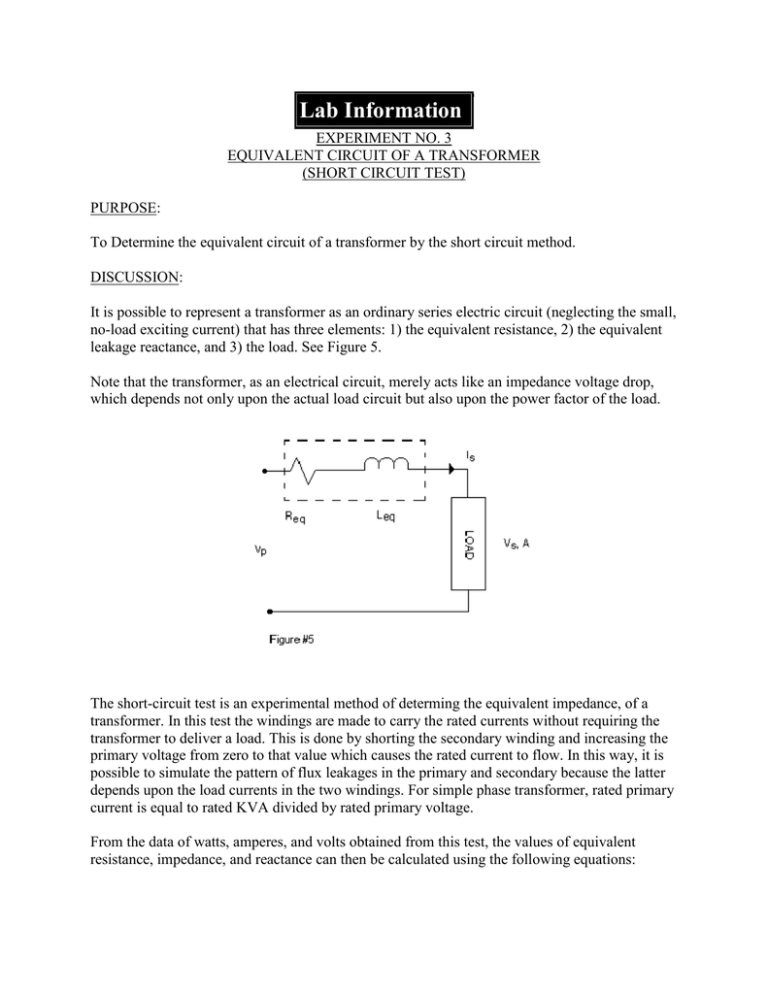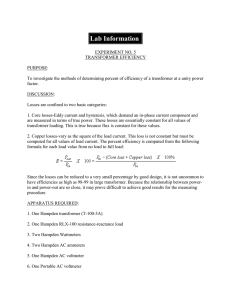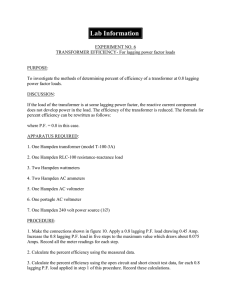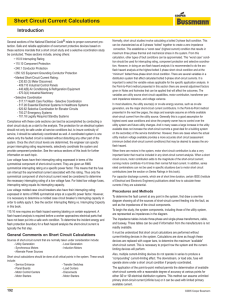Lab Information
advertisement

Lab Information EXPERIMENT NO. 3 EQUIVALENT CIRCUIT OF A TRANSFORMER (SHORT CIRCUIT TEST) PURPOSE: To Determine the equivalent circuit of a transformer by the short circuit method. DISCUSSION: It is possible to represent a transformer as an ordinary series electric circuit (neglecting the small, no-load exciting current) that has three elements: 1) the equivalent resistance, 2) the equivalent leakage reactance, and 3) the load. See Figure 5. Note that the transformer, as an electrical circuit, merely acts like an impedance voltage drop, which depends not only upon the actual load circuit but also upon the power factor of the load. The short-circuit test is an experimental method of determing the equivalent impedance, of a transformer. In this test the windings are made to carry the rated currents without requiring the transformer to deliver a load. This is done by shorting the secondary winding and increasing the primary voltage from zero to that value which causes the rated current to flow. In this way, it is possible to simulate the pattern of flux leakages in the primary and secondary because the latter depends upon the load currents in the two windings. For simple phase transformer, rated primary current is equal to rated KVA divided by rated primary voltage. From the data of watts, amperes, and volts obtained from this test, the values of equivalent resistance, impedance, and reactance can then be calculated using the following equations: WHERE: Re = equivalent Resistance Psc = short circuit watts Isc = short circuit amps WHERE: Ze = equivalent Impedance Esc = short circuit volts WHERE: Xe = equivalent Reactance APPARATUS REQUIRED: 1. One Hampden Transformer (Model T-100-3A). 2. One Hampden AC Wattmeter. 3. One Hampden AC voltmeter. 4. One Hampden AC ammeter. 5. One Hampden variable AC power supply. PROCEDURE: 1. Calculate the full load current for the Hampden Transformer which is rated at 240/120 volt, 120VA for the connection shown in Figure 6. 2. Make the connections shown in Figure 6 and BE SURE that the power supply is set to ZERO VOLTS before turning on the power. 3. Slowly increase the voltage of the power supply until the ammeter indicates full load current. Record all meter readings. REPORT: Prepare a written report to include: 1. A discussion of full load copper losses and the equivalent circuit. 2. A schematic of the equivalent circuit. 3. A table for all meter readings 4. Calculations for Re, Ze, and Xe. 5. Refer these calculations to the secondary. SHORT CIRCUIT TEST FIGURE #6. CAUTION: BE SURE THE AC SUPPLY IS SET TO ZERO BEFORE TURNING IT ON.









